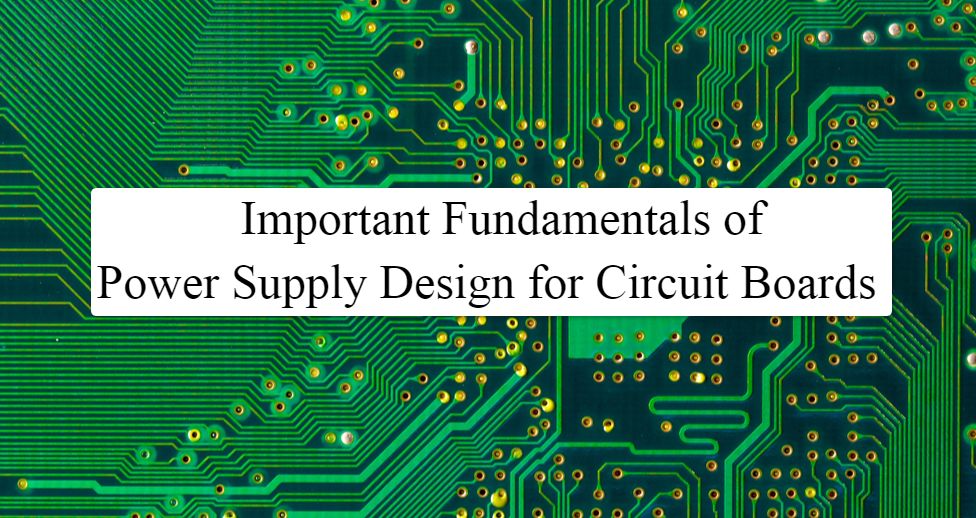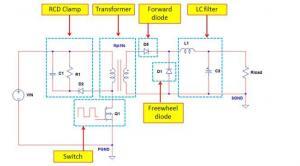
Important Fundamentals of Power Supply Design for Circuit Boards
What is Power Supply Circuit Board?
Power supply circuits are the wellspring of power or battery for the frameworks of every electronic gadget and circuit boards. A power supply circuit board contains the power that is supplied through sub-circuits. In any case, it is normal for Printed Circuit Boards to fill in as power supply sources. These power supply boards are converters in real as they convert a source of power received at the input in the form of an output that meets the prerequisites of the system and circuit.
Regardless of source and burden prerequisites, it is consistently critical to design your power supply circuit board‘s structure, an essential piece of the format plan for your construction of Printed Circuit Boards. Let us understand the basics of power supply circuits by examining the various kinds of power supply circuits. Thereafter, we will characterize the basics of power supply structures that ought to be applied for their further design.
Types of Power Supply Circuit Boards
Power supply circuits are fundamentally used to change the form of power supplied from one state to another, alternative current to direct current or the other way around, according to various levels, to raise or lower voltage or frequency of the power supply. AC to AC power supplies may likewise be utilized to disengage input circuits from the output ones.
Along with the factors that we have discussed until now, power supply circuits can be classified as either regulated or unregulated. Controlled force supplies incorporate gadgets to keep up the voltage level of the output. These voltage controllers are absent in unregulated force supplies, and the output shifts with the variation in the current or load. Power supply circuits are usually classified on the basis of the nature of their activity. The two essential operational sorts are Linear Power Supply and Switch Mode Power Supply. Let us discuss both of these in detail.
Linear Power Supply

Linear power supply circuit design is utilized to change over an alternating current input in the mains into direct current for dissemination. The alternative current input is the essential side of the transformer. This circuit incorporates a voltage controller that will give a consistent voltage regardless of the power load. Linear power supply shows the fundamental activity and nature of these circuits, which may have a wide range of setups.
Linear power supplies are normally utilized in frameworks with a lower power load. The effortlessness, ease, dependability, cost-effectiveness, and low commotion are the varied positive factors influencing the linear power supply. Nonetheless, they are not as efficient, which is an essential factor to be kept in mind while the type of power supply for applications with a high power requirement.
Switch Mode Power Supply

Switch-mode power supply circuit design contains circuits with a switch-based mechanism such as a transistor that converts the rectified direct current from the bridge circuit into the high-frequency alternative current. The frequency level is determined or set by the control signal that turns the transistor on and off. Usually, Switch Mode Power Supply circuits are more complex than linear power supply circuits. The switching introduces noise that can create EMI, which may have an effect on your trace routing during the designing of the layout of the Printed Circuit Board. However, these power supplies are comparatively a lot more efficient while they can maximize the use of smaller components when compared to linear power supplies. Switch Mode Power Supply circuits are utilized mostly for digital systems.
Also read:- What is In-Circuit Testing
Fundamentals of Power Supply Design
When planning a Switch Mode Power Supply or a Linear Power Supply circuit board, some key points need to be kept in mind, which are typical for both. These incorporate thermal contemplation’s, noises, and the power level of copper loads. Another significant factor is the structure of the power supply filter. In spite of the fact that your particular plan’s requirements will direct explicit decisions related to structure, there are general essentials of power supply design for PCB that need to be consistently followed. Let us discuss the key points as to how to design a power supply.
Improving the design of your Filter
The efficiency of the Filter of your circuit relies on choosing the proper parts or components for the filters. The inductance, capacitance, and resistance should also be kept in mind while choosing components. As the components’ real values may not coordinate with the determined values, you must consider the blend of the component values that give the best reaction as decided through models.
Pick the suitable copper loads
The currents of the power supply might be very high. Hence, it is necessary to make sure that the width and thickness of the copper loads are efficient enough to convey the required current flows. Along with that, it is critical to guarantee that your format clings to leeway resistances as specified in the DFM rules by your manufacturer.
Choose your materials based on the type of your board
For circuits with high power flow, ensure that your board can stand firm against the temperature levels produced by selecting the materials with a suitable coefficient of thermal expansion, which is also known as CTE. In the case of Switch Mode Power Supply, a structure with high speed and properties, for example, dielectric constant, dissemination factor, dielectric loss, and conductor loss, become significant and should be the critical factor in the choice of your material.
Your board must include appropriate thermal dissipation
The greatest matter of concern for power supply design boards is taking off the heat present in abundance. Your structure must incorporate sufficient methods for scattering the excess heat. For instance, thermal cushions are used to disseminate the excess warmth. Interestingly, it is significant for assembling the PCB that your board has a satisfactory thermal resistance mechanism to accomplish a good quality connection.
Read more:- PCB Testing Methods
Conclusion:
By initiating the key pointers mentioned and discussed in the article concerning the power supply design, you can achieve a high power supply circuit design when considered well upon. The fundamentals are helpful towards invigorating the right essentials to power supply for circuit boards.

